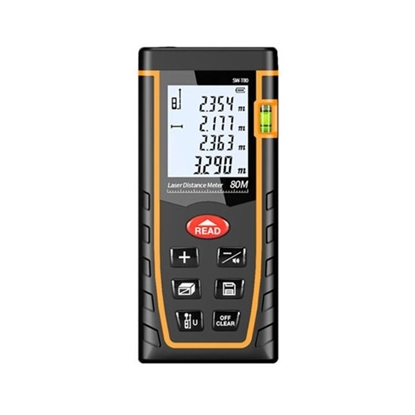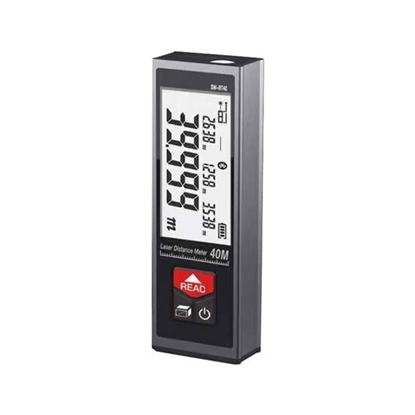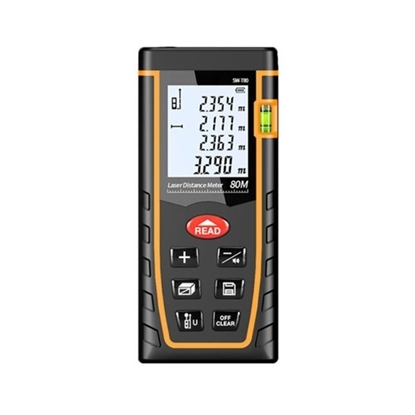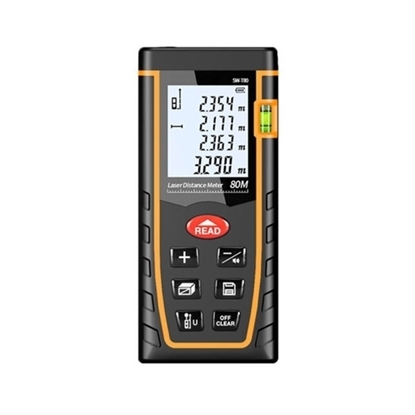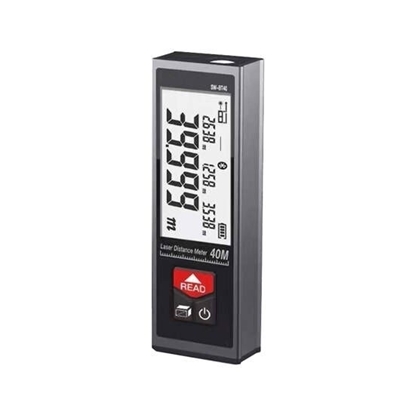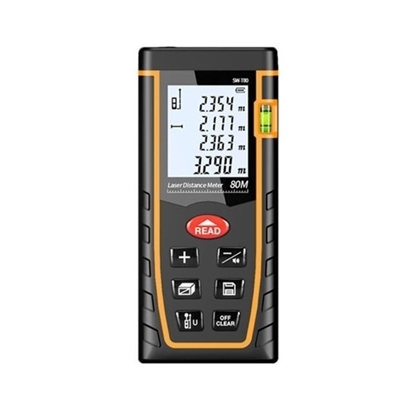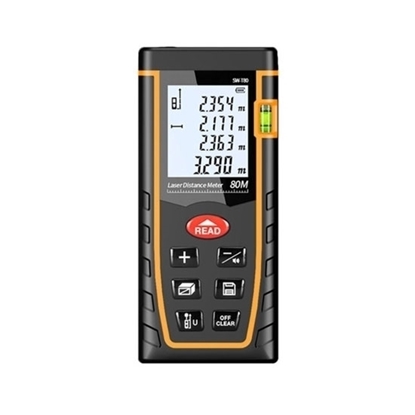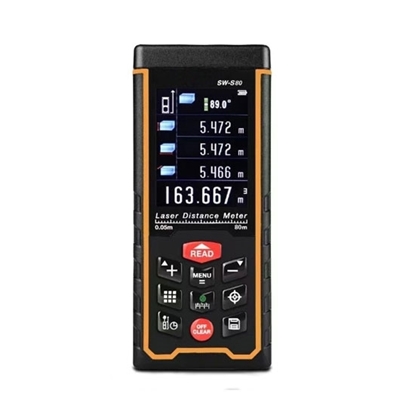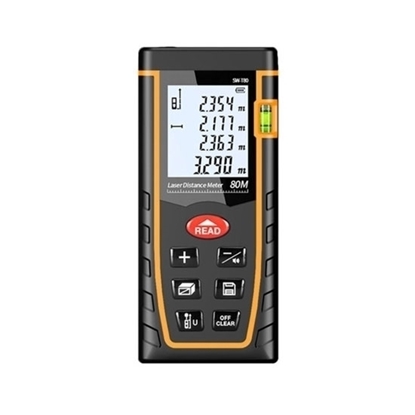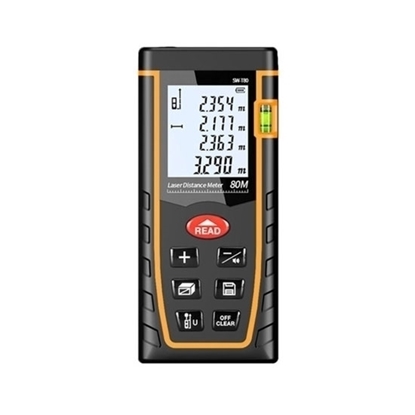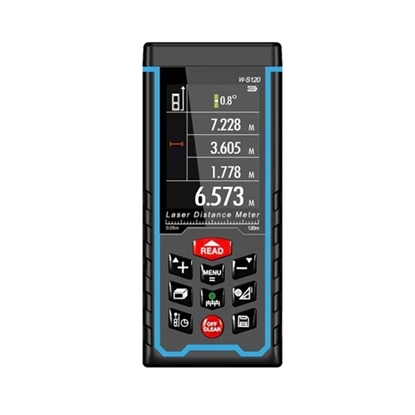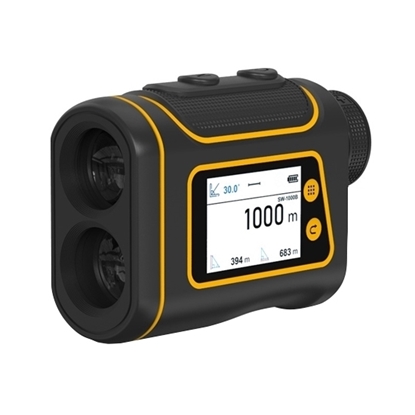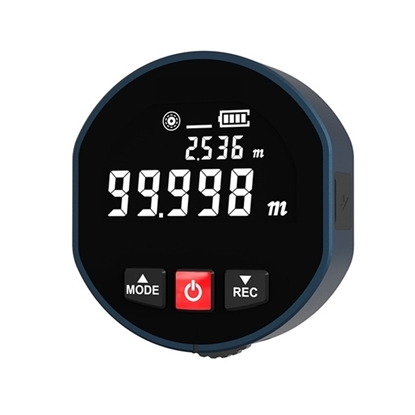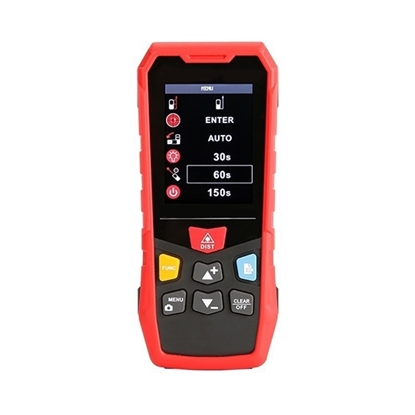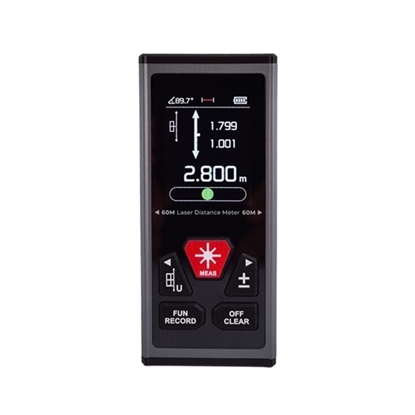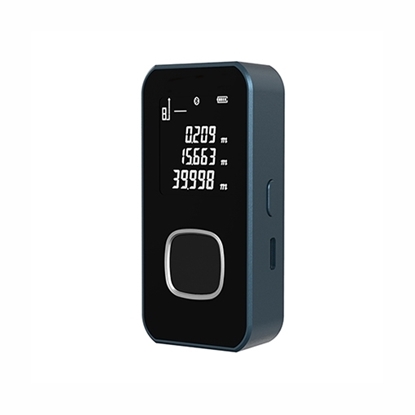Distance Meter
40m Digital Laser Distance Meter
40m Digital Laser Distance Meter with Bluetooth
50m Digital Laser Distance Meter
50m Digital Laser Distance Meter with Bluetooth
60m Digital Laser Distance Meter
60m Digital Laser Distance Meter with Bluetooth
70m Digital Laser Distance Meter
80m Digital Laser Distance Meter
80m Laser Distance Meter with Camera
100m Digital Laser Distance Meter
120m Digital Laser Distance Meter
120m Laser Distance Meter with Camera
Laser Telescope Rangefinder with Touch Screen, 800/1000/1500m
Laser Telescope Rangefinder, 3-500/1000/1500m
Digital Roller and Laser Distance Meter
200m Laser Distance Meter with Camera
Bilateral Laser Distance Measure Meter, 120/200m
Portable Laser Distance Meter with Bluetooth, 40/50/60m
A distance meter, also known as a laser distance meter or a laser rangefinder, is a handheld or portable electronic device that uses laser technology to accurately measure distance between two objects or surfaces. It works by emitting a laser beam towards the target and measuring the time it takes for the beam to bounce back to the device.
ATO distance measuring devices use advanced laser technology to ensure accurate measurements even in challenging environments. In addition, the device is equipped with a large display that makes it easy to read measurements even in low light conditions. Whether you are measuring room dimensions, calculating material quantities or determining the distance to a target, our distance meters are the ultimate solution. Buy this quality distance meter now and take your project to the next level!
Features of the digital distance meter
- Measures distance up to 40 m, 50 m, 60 m, 100 m to 120 m with an accuracy of ± 2mm.
- Instant distance measurement with one-button operation.
- Ideal for indoor and outdoor applications.
- Backlit screen for improved visibility.
- Bright laser for easy aiming.
- Quick area calculation (square feet).
- Continuous measurement capability.
- The auto shut-off feature improves battery life.
- Functionality.
- Battery life of 3,000 measurements.
Laser distance meter types
- Hand-held laser distance meter
The measurement distance is generally within 200 meters, and the accuracy is about 2mm. In addition to the function to measure the distance, it can also generally calculate the volume of the measured object.
- Cloud service laser rangefinder
The measurement data on the laser rangefinder is transmitted to mobile terminals such as cell phones and tablet PCs in real time through Bluetooth; the data can be transmitted to the cloud server through wifi networking, and the measurement data can be shared in real time by the construction partners at remote locations.
- Cloud service laser rangefinder
The measurement data on the laser rangefinder can be transmitted to mobile terminals such as cell phones and tablet PCs in real time through Bluetooth; the data can be transmitted to the cloud server through wifi networking, and the measurement data can be shared with the construction partners at remote locations in real time.
- Telescopic laser rangefinder
The measurement distance is relatively long, and the general measurement range is about 3.5m-2000m, and there are also rangefinding telescopes with a maximum range of about 10km. Due to the collimation requirements of rangefinding telescopes, the blind area is below 3.5m, and the laser telescopes larger than 2000m generally use YAG laser, wavelength of 1.064 microns, in order to achieve a larger measurement range, so the laser power is larger, it is recommended that users pay attention to laser protection.
What is a laser distance meter min/max measurement?
Maximum and minimum distances as the laser beam sweeps across The maximum and minimum distances are recorded simultaneously on the screen at sub The sub value positions on the screen as the laser is scanning the target surface. The maximum and minimum distances are recorded simultaneously at the sub value positions on the screen as the laser scans the target surface.
Laser distance meter applications

- Construction: Distance meters are commonly used in construction projects to measure distances, heights, and angles for accurate layouts and planning.
- Architecture: Architects use distance meters to measure room dimensions, window and door sizes, and other important measurements in order to create accurate blueprints and models.
- Surveying: Distance meters are used in surveying to measure distances and angles in order to create accurate maps, topographic models, and land surveys.
- Sports: Distance meters are used in sports such as golf, archery, and shooting to measure the distance between the player and the target.
- Industrial measurements: Distance meters are used in manufacturing and industrial applications to measure distances between equipment and objects, or to ensure that parts are properly aligned and positioned.
- Inspection: Distance meters are used in quality control and inspection applications to measure distances between objects, or to ensure that parts are within acceptable tolerances.
- Astronomy: Distance meters are used in astronomy to measure the distance between stars and other celestial objects.
- Photography and videography: Distance meters are used in photography and videography to measure the distance between the camera and the subject, in order to ensure accurate focus.
How to choose a handheld Laser distance meter?
- Range accuracy
The accuracy of laser rangefinders varies from price to price. When choosing, the selection of the appropriate accuracy and measurement range of the laser rangefinder depends mainly on the needs of the measurement. - Additional functions
Handheld laser rangefinder is mainly used for construction and interior decoration. Some additional functions can help the work, such as automatic calculation of area, volume, self-converting units, connecting to cell phone via Bluetooth, simple drawing, etc. The functions are comprehensive. The simple operation is more worth buying. - Easy to carry
The portability of the product is also the basis for judging the quality of handheld laser rangefinder. A good handheld laser rangefinder should be light in weight, small in size, easy to carry and comfortable in the hand.
- Endurance
Handheld laser rangefinders are generally used indoors, but they also need to have good durability, otherwise they will be charged quickly and affect work efficiency.
How to maintain the laser distance meter?
Laser distance meters are a useful tool for accurately measuring distances and have become increasingly popular in the construction and DIY industries. Proper maintenance of your laser distance meter will ensure accurate readings and extend the life of the device. Here are some tips for maintaining your laser distance meter:
- Keep it clean: Dirt and debris can interfere with the laser's accuracy. Use a clean, dry cloth to wipe the lens and body of the device after each use. Avoid using harsh chemicals or abrasive materials that could damage the surface of the laser distance meter.
- Protect the lens: The lens is a crucial component of the laser distance meter. Always keep the lens cap on when not in use to protect it from dust and scratches.
- Check the batteries: Low battery levels can affect the accuracy of the laser distance meter. Replace the batteries regularly and always have spare batteries on hand.
- Store it properly: Store the laser distance meter in a protective case when not in use to prevent damage from impact or exposure to extreme temperatures.
- Avoid exposure to moisture: Laser distance meters are sensitive electronic devices that can be damaged by exposure to moisture. Avoid using the device in wet conditions and store it in a dry location.
- Calibrate regularly: Over time, the accuracy of the laser distance meter can be affected by wear and tear. Calibrate the device regularly according to the manufacturer's instructions to ensure accurate readings.

